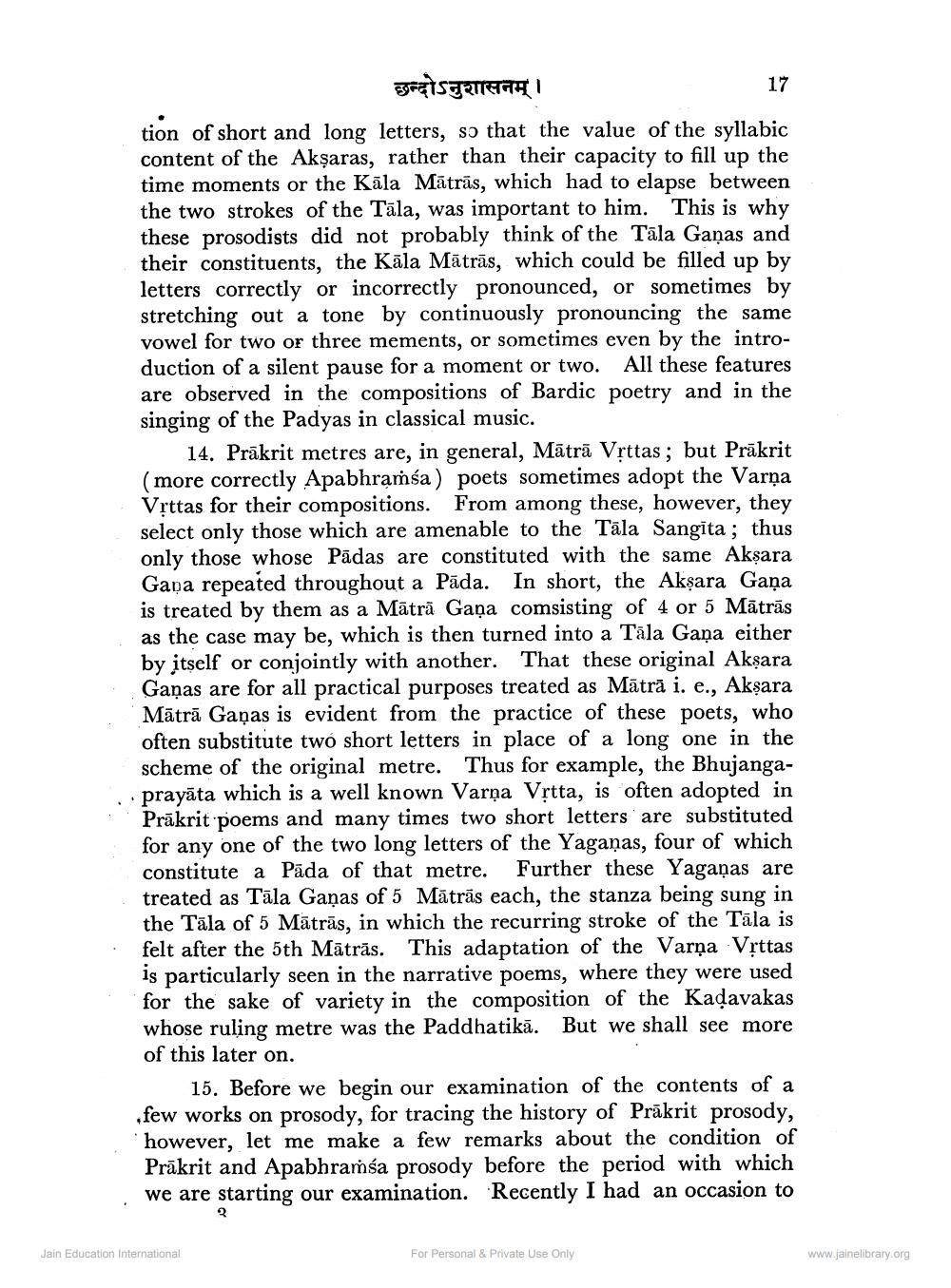________________
छन्दोऽनुशासनम् ।
tion of short and long letters, so that the value of the syllabic content of the Akşaras, rather than their capacity to fill up the time moments or the Kāla Mātrās, which had to elapse between the two strokes of the Tala, was important to him. This is why these prosodists did not probably think of the Tala Ganas and their constituents, the Kāla Mātrās, which could be filled up by letters correctly or incorrectly pronounced, or sometimes by stretching out a tone by continuously pronouncing the same vowel for two or three mements, or sometimes even by the introduction of a silent pause for a moment or two. All these features are observed in the compositions of Bardic poetry and in the singing of the Padyas in classical music.
14. Prakrit metres are, in general, Mātrā Vṛttas; but Prakrit (more correctly Apabhramśa) poets sometimes adopt the Varṇa Vṛttas for their compositions. From among these, however, they select only those which are amenable to the Tala Sangita; thus only those whose Pādas are constituted with the same Aksara Gapa repeated throughout a Pāda. In short, the Aksara Gana is treated by them as a Matra Gaṇa comsisting of 4 or 5 Mātrās as the case may be, which is then turned into a Tala Gana either by itself or conjointly with another. That these original Aksara Ganas are for all practical purposes treated as Mātrā i. e., Aksara Mātrā Gaṇas is evident from the practice of these poets, who often substitute two short letters in place of a long one in the scheme of the original metre. Thus for example, the Bhujangaprayata which is a well known Varna Vṛtta, is often adopted in Prakrit poems and many times two short letters are substituted for any one of the two long letters of the Yaganas, four of which constitute a Pada of that metre. Further these Yaganas are treated as Tāla Gaṇas of 5 Mātrās each, the stanza being sung in the Tala of 5 Mäträs, in which the recurring stroke of the Tāla is felt after the 5th Mātrās. This adaptation of the Varna Vṛttas is particularly seen in the narrative poems, where they were used for the sake of variety in the composition of the Kadavakas whose ruling metre was the Paddhatika. But we shall see more of this later on.
17
15. Before we begin our examination of the contents of a ,few works on prosody, for tracing the history of Prakrit prosody, however, let me make a few remarks about the condition of Prakrit and Apabhramśa prosody before the period with which we are starting our examination. Recently I had an occasion to
Jain Education International
For Personal & Private Use Only
www.jainelibrary.org




